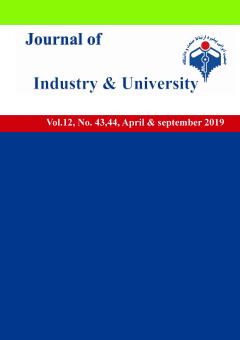The Incentives and Methods of Moving towards Self-governance at Iran’s Universities: A Critical Investigation
Subject Areas : General
1 -
Keywords: Industry, University, Self-Governance, Bridge,
Abstract :
The author of this research is an experienced investor with a long-standing and established presence in the industry and has a dynamic relationship with local universities. He considers the first step as clearly defining the goals of academic self-governance, followed by a thorough identification of incentives for self-governance at higher education institutions. Why should universities be self-governed?What measures need to be taken to achieve “self-governance” at universities?Below, the underlying reasons for progressing towards “self-governance” in higher education institutions will be explained in detail: -The need for investment to develop infrastructure pertinent to universities. -The Government’s limited and arguably insufficient funding for universities. -The need to foster financial and income diversity among universities. -Benefiting from the process of financing as a tool for transformation. -The need to increase welfare benefits and enhance general standards of living for academics through wealth creation by universities themselves. -The need for quantitative and qualitative enhancement of resources made available to university researchers, specialists, and consultants in the field of Industry and Economy. -Helping mitigate the “brain drain” crisis . -The need for improved standards of accountability with respect to university stakeholders. (Through a more prominent involvement of universities in the nation’s development process). -The need for innovation in the field of technology. -Increasing the competitiveness of local universities in accordance with international standards. -The need for independence and financial autonomy of universities to grow and evade restrictions. In this section, we will attempt to clarify our definition of "self-governance at universities" as financial self-governance – aiming to minimize reliance on public funds as the main source of endowments. By emphasizing on the lawful self-governance of universities, in line with their institutional missions, the potential of universities will no longer be constrained by the “what ifs” and “only ifs” commonly heard at academic institutions dependent on public funds. The need for self-governance (financial self-sufficiency) can also be traced in the Constitution. Finally, it is essential to note that by paving the way for self-governance at universities through the allocation of responsibilities among academia as their “national commitment”, we can help transform the industry and promote the sustainable development of the country. Addressing the methods of achieving self-governance, we should reevaluate our perception of universities by looking through a different lens. Perceiving universities as “enterprises” or “firms” reveals the nuanced dimensions of the issue and allows for greater emphasis to be put on "industry" as the main customer of universities. At the third and final stage of the quest, the deviser of the Bridge plan suggests that there will be a systematic yet creative connection between the notion of academic self-governance and the Bridge plan itself. The wagons of academic self-governance will fit perfectly on the railway tracks of the Bridge plan, and the train will head for the destination. In this part, we will provide a brief overview of the Bridge plan for those not familiar with it. The Bridge Plan: The metaphorical use of the term “bridge” is meant to describe the dynamic relationship between the industry and universities, as the driving forces behind the economic development of the country. It should be noted that the Bridge plan is a trnasformational progress towards tackling the most fundamental issues in the national economy–through a process-oriented and purposeful act of “bridgin
مجموعه مقالات کنگره های سراسری همکاری های دولت دانشگاه و صنعت برای توسعه ملی

